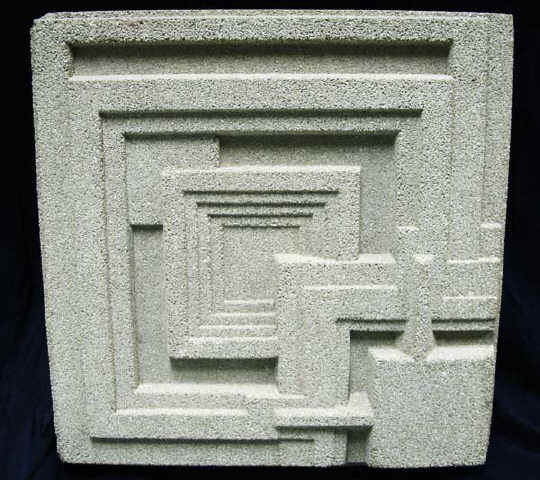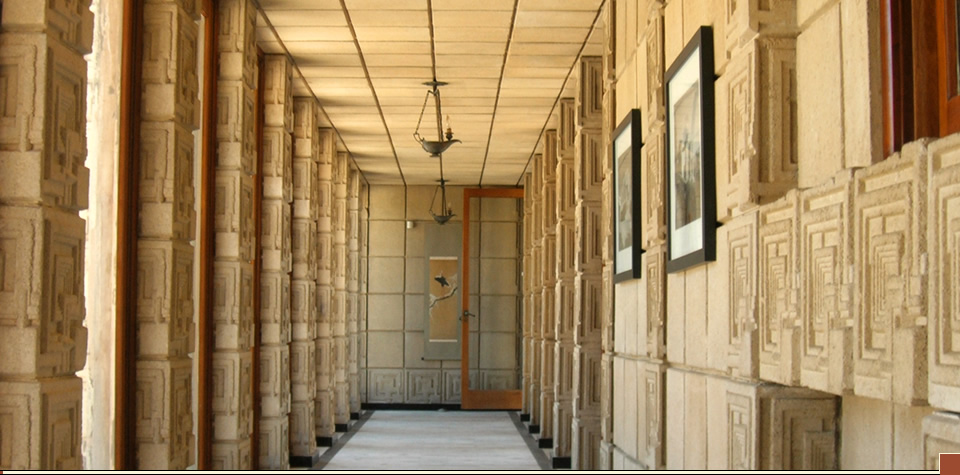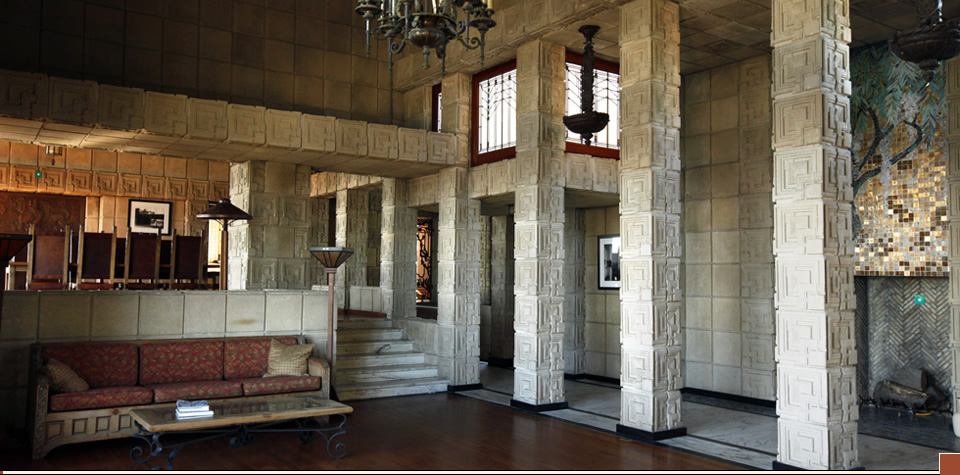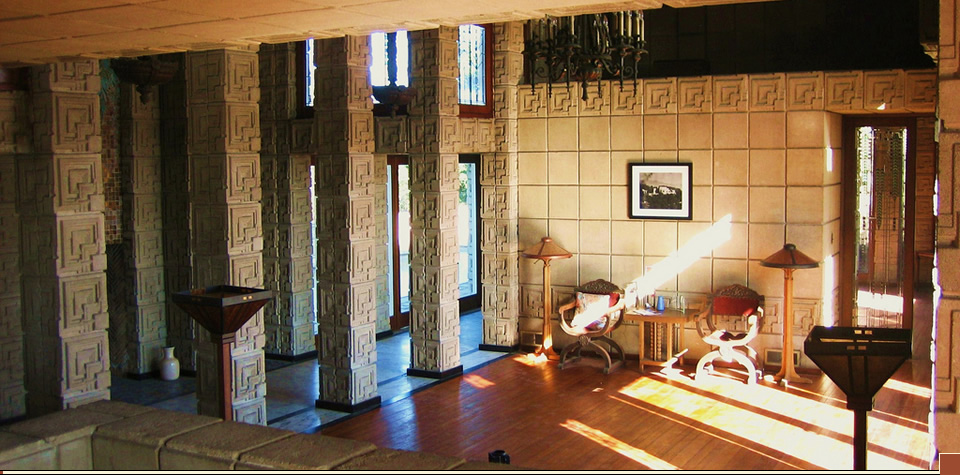Built in 1924 for Charles Ennis and his wife Mabel, the Ennis House was designed by Frank Lloyd Wright and built by his son, architect Lloyd Wright.
The house is the last and largest of four “textile block” houses in Los Angeles area, which feature patterned and perforated concrete blocks that give a unique textural appearance to both their exteriors and interiors. Frank Lloyd Wright designed a custom pattern for each of the houses built with concrete blocks.

It was an experiment in the functional and artistic possibilities of concrete, which was still considered a new material, especially for home construction. The phrase “textile block” came from the way vertical and horizontal steel rods were woven through channels in the concrete to keep the blocks knitted together and held in position.

“My grandfather designed homes to be occupied by people. His homes are works of art. He created the space, but the space becomes a creative force and uplifts when it is lived in every day.” Eric Lloyd Wright

Between 1909 and 1959, Wright designed a total of 38 structures up and down the West Coast, from Seattle to Southern California. These include the Marin County Civic Center and Hollyhock House in Los Angeles.
